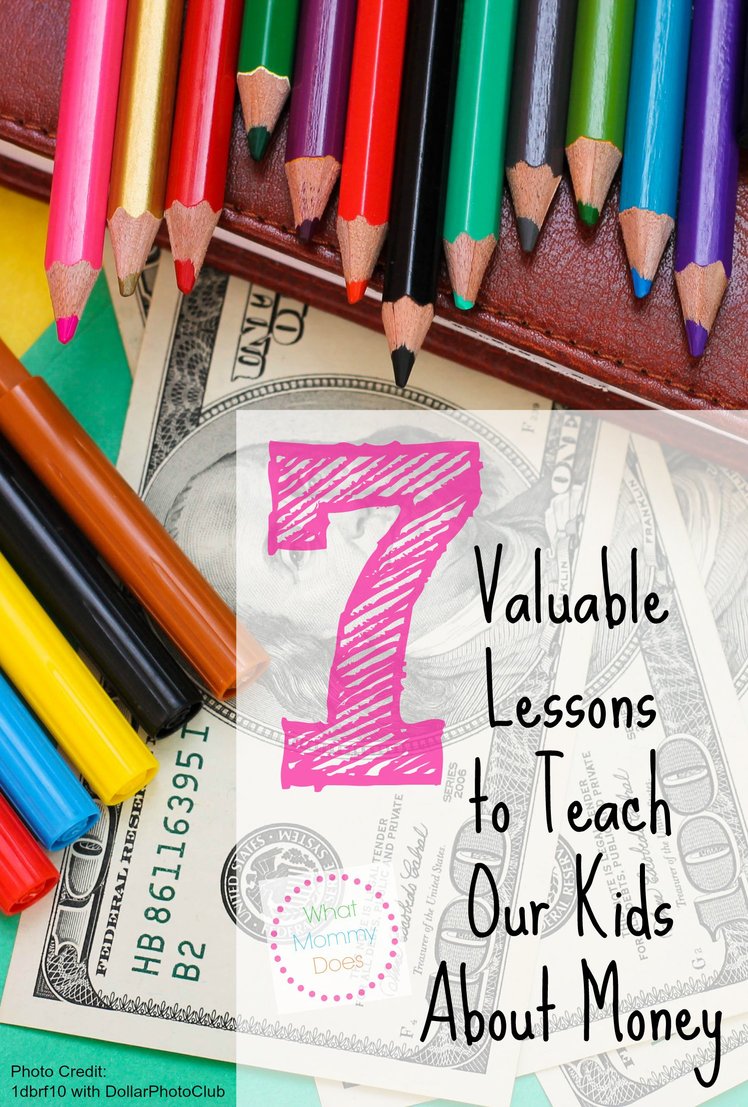Today I am honored to have a guest post on the blog from personal finance writer, Anum Yoon. Take it away Anum!
Without question, we want the best for our kids. The highest rated schools, the safest cars and even the healthiest lunches. We want to know they are prepared for life after high school or college. But financial education isn’t included in most student curriculums. Do you know if your kids know how to budget their money?
If you want your children to go to college one day, or even just have a financially sound life, prepping them for a world of real household finances should be started early. Plus, if you think your kids will go to college one day, you don’t want them to be a part of the rising student-loan default debt in the country. They might be brilliant writers, but a Creative Writing major probably won’t ever be able to pay off that $100,000 tuition bill without shelling out a significant chunk of interest payments as well.
Don’t want your kids to suffer? Start teaching them these 7 lessons about money today.
1) Lessons in Budgeting: An Allowance
No child is too young or old to learn how to budget and an allowance is an ideal starting place. But before you hand over your hard earned cash, think about what you want your kids to learn from earning an allowance. For instance:
- $10 a week is a ton of money for an 8-year old. Do they need to finish their chores before they get their money? It isn’t free money, right?
- Will they pay “taxes”? Yes, that’s right, I said taxes. One of the hardest concepts for kids to grasp when they hit the workforce is that their minimum-wage paycheck will be hard hit by Uncle Sam. Instead of outright giving them $10, think of this as an opportunity to take 20% of that $10 in taxes and put it in a savings account for their college education. Make sure they understand how and why you’re doing this, and that as their allowance increases, so will that deduction.
Should your kids come to you and want to make a major purchase, make sure they understand the ramification of doing so. For example, they might be completely broke for the rest of the summer if they buy themselves a tablet. Would they rather go to the movies and hang out with friends or have a tablet?
If you have younger children, a clear jar system might work out even better. Instead of using a traditional piggy bank, use a minimum of two clear jars for their change, birthday money and allowance. You can label them “Savings,” and “Spending.” The Savings jar is for their long-term goals, while “Spending” is for that bit of candy they can’t live without.
2) Let Them Make Mistakes
This might be the hardest lesson of all. You can guide your children only so much. Sometimes, it’s best to let them make a mistake, especially while they’re still living at home and you can provide some post-error guidance.
If you’ve gone over the pros and cons of a major purchase, and you know they’re about to make a huge mistake, they’ll remember the lesson even more strongly once they’ve messed up.
3) Brand Names Are Always Best (Ha!)
Because they’re much more affected by mainstream culture and pressure to conform, this might seem like an impossible lesson. If they don’t have the latest iSomething, they’re suffering will be so immense that we as parents can’t possibly understand. It’s ok to roll your eyes.
Start small — don’t think you’re going to wake your kids up to new (cheaper) tech. Try clothing first. Stores like H&M provide alternatives to more expensive brand name clothing. Their allowance will go much further here than at a store like Lucky Brand.
Even better, teaching your children a love of second-hand shopping will serve them well in the future. If they can’t stand to not wear brand name clothing, it might be time to teach them to scour eBay and consignment shops.
4) Explain Cash vs. Credit
Credit seems magical to a kids — heck, I know some adults who haven’t quite grasped credit yet. All you have to do is swipe a plastic card and you take home your heart’s desire. Nip that ideal in the bud as soon as possible.
Interest rates lead to doom. Cash should always be a primary method of payment, with credit reserved for extreme emergencies.
There are many sites that offer free online lessons for kids to learn about their finances. Mint.org offers games and lessons for kids, teens and even parents. Don’t let your kids step out of high school and into debt.
5) Set Savings Goals
Even without a tangible object in mind, it’s important to establish savings goals. It’s easier to establish a reason for a savings goal, especially with younger children if there’s a toy coming onto the market in a few months they really want. Delayed gratification is an important lesson – particularly in a generation so accustomed to instant gratification.
Your best bet with smaller children is to make savings fun. Use a chart or a white board in their room to track how much money they have and how well they’re saving. It will keep them involved with their goals. For older teens, investigate Google spreadsheets.
6) Grocery Shopping 101
The television show Guys Grocery Games is a guilty pleasure of mine. Occasionally contestants will get a small sum of money with a coupon flier and they have to make a gourmet meal with $5. When you’re counting pennies, and most college kids do count pennies at the grocery store, this game will come in handy.
This is another opportunity to show them where brand names matter and where they don’t. Personally, there are some brands I prefer over others when it comes to food. Teach them what’s actually important. There’s a balance between maintaining a well-kept household and frugality.
Also, teaching your kids how to cook will enhance their ability to budget their money, because eating out is expensive, plus, it’s one heck of a marketable social skill.
7) Discuss Utility Bills
Another hard lesson to learn is how much housing costs. As adults, we know that an $800 a month rental unit will cost a good bit more than that once utilities are added in. A frank discussion with your kids will help them understand just how much it costs to maintain a house, and why you’re always nagging them to turn off the lights when they leave the house.
The hope is this will affect how they manage their finances in the future, but it might also help you rein in water and electrical costs in your own household now, too.
Set your children up for financial success. Learning these life skills on the fly as adults opens up too much room for error. It’s too easy to swipe a card or sign paperwork that leaves you in debt for decades. Follow these basic teaching principles and send your children on their path to a secure financial future.
Anum Yoon is a personal finance blogger and freelance writer who strangely enough, found her passion for money management through her extensive travels around the world. Since deciding to settle in the US, she has been faced with the task of becoming a responsible consumer with an excellent credit score. You can read her updates on her blog, Current On Currency, or check out her latest ramblings on Twitter at @anumyoon.
- 27+ Budget-Friendly Meal Train Ideas - 04/04/2024
- 30 Non-Toy Christmas Gift Ideas for Kids - 10/31/2023
- 50+ Fun Family Christmas Gift Ideas for Every Budget - 10/31/2023












Leave a Reply